第41章 LIBRARY WORK WITH CHILDREN(2)
True,that is a rarely tender passage in the Winter's Tale wherein Hermione speaks with her beloved boy,and the pathos of Arthur's plea as he asks Hubert to spare his eyes is of course a masterpiece of literature;these,however,the sum total of the great dramatist's significant references to childhood.
In the great works on canvas,save where the Christ-child is depicted,may be noted that same absence of the spirit of childhood.Wealthy and royal patrons,indeed,encouraged great artists to add favorite sons and daughters to the array of portraits in their family galleries.In time,the artists gave to the progeny of the nobility and the aristocracy generally,such creations as to them seemed appropriate to their years.These poses are but the caricature of childhood.Morland,Gainsborough,Sir Joshua Reynolds and other artists of their day represented the children of their wealthy patrons in attitudes which savor somewhat of burlesque,though it may have been intended quite seriously to hedge them about with spontaneity.
It has been said that "a child's life finds its chief expression in play,and that in play its social instincts are developed."If this be true,we find in some contemporary canvases of this English school a curious reproduction of the favorite pastimes of children.One is called "bird-nesting,"the title descriptive of the favorite diversion thus depicted.Another bears the legend "Snow-balling,"and with no apparent disapproval save on the part of the little victims,shows a group of larger children ruthlessly snow-balling some smaller ones who have sought shelter in the portico of a church.Some distance down the street the form of an aged woman suggests another victim of youthful playfulness.
A century and a half ago there was born,frail at first but with constant growth,a perception that the great moving forces of life contain elements hitherto disregarded.Rousseau sounded his thesis,Pestalozzi began to teach,and but a little later on,Froebel expounded his tenets.We need not be concerned as to the controversial disputation of rival schools of pedagogues whose claims for one ignore the merits of the other.A new thought came into being,and both Pestalozzi and Froebel contributed to its diffusion--whether in the form of Pestalozzi's ideal,"I must do good to the child,"or Froebel's,"I must do good through the child,"or perhaps a measurable merging of the two.
Responsive to the note of life and thought around them,the great authors of prose and verse began to inject the new expression of feeling into what they wrote.Perhaps best reflected,as indeed it proved most potent in molding public opinion,this thought entered into the novels of Charles Dickens.These,in the development of child life as a social force,not only recorded history;they made history,and the virile pencils of Leech and Phiz and Cruikshank aided what became a movement.